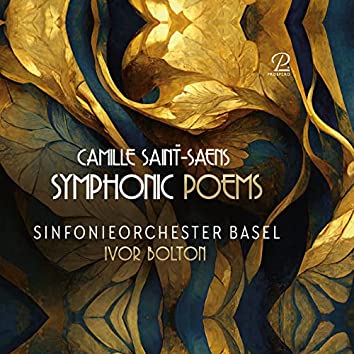Das Sinfonieorchester Basel und sein Chefdirigent Ivor Bolton haben das Saint-Saëns-Programm dieser CD unter Verwendung der Neuen Kritischen Werkausgabe bei Bärenreiter aufgenommen.
Bei Ivor Bolton wird die Dance Macabre von Camille Saint-Saëns in einem schlanken und fein nuancierten Klang alles andere als makaber-derb und laut, wie man das Stück manchmal hört. Bolton dirigierte es mit französischer Eleganz, als humoristische Groteske, tänzerisch und verspielt. Schon die zwölf Glockenschläge nimmt er schnell und schafft eine Erwartung, die man so sonst nicht unbedingt hört. Und die Erregung hält an. Die Musik ist immer leicht und beschwingt, als Tanz, in dem die Hexen wie an Banjoseilen schwingen, begleitet vom sensuellen Geigenspiel des im Booklet nicht genannten Solisten. Es dürfte aber Axel Schacher, der 1. Konzertmeister des Orchesters sein. Ich habe mir schnell mal ein halbes Dutzend Aufnahmen angehört und keine gefunden, die derart inspiriert und reizvoll klingt.
In seiner Tondichtung La Jeunesse d’Hercule beschreibt Saint-Saëns Episoden aus dem Leben des jungen Herkules, in Phaéton dessen gefährliche Fahrt durch den Himmel und in Le Rouet d’Omphale (Das Spinnrad der Omphale) das Spinnen des als Frau verkleideten Herkules, der von Apollo zu dieser Arbeit verurteilt wurde. Die Interpretationen, die mit der nötigen Sorgfalt vorbereitet und mit bemerkenswertem Engagement gespielt werden, sind stimmungsvoll und werten die Kompositionen so auf, dass sie zu äußerst attraktiven, farbenfrohen und spannungsgeladenen Werken werden.
The Basel Symphony Orchestra and its principal conductor Ivor Bolton have recorded the Saint-Saëns program on this CD using the New Critical Edition published by Bärenreiter.
With Ivor Bolton, Camille Saint-Saëns’s Dance Macabre is rendered in a lean and finely nuanced sound that is anything but macabre-bitter and loud, as one sometimes hears the piece. Bolton conducts it with French elegance, as a humorous grotesque, dance-like and playful. Even the twelve chimes he takes quickly, creating an expectation not necessarily heard elsewhere. And the excitement continues. The music is always light and buoyant, as a dance in which the witches swing as if on banjo ropes, accompanied by the sensitive violin playing of the soloist, who is not named in the booklet. But it should be Axel Schacher, the 1st concertmaster of the orchestra. I quickly listened to half a dozen recordings and found none that sounded as inspired and delightful.
In his tone poem La Jeunesse d’Hercule, Saint-Saëns describes episodes from the life of the young Hercules, in Phaëton his perilous journey through the heavens and in Rouet d’Omphale (The Spinning Wheel of Omphale) the spinning of Hercules disguised as a woman, condemned to this work by Apollo. The interpretations, prepared with the necessary care and played with remarkable commitment, are full of atmosphere and enhance the compositions in such a way that they become extremely attractive, colorful and exciting works.




















